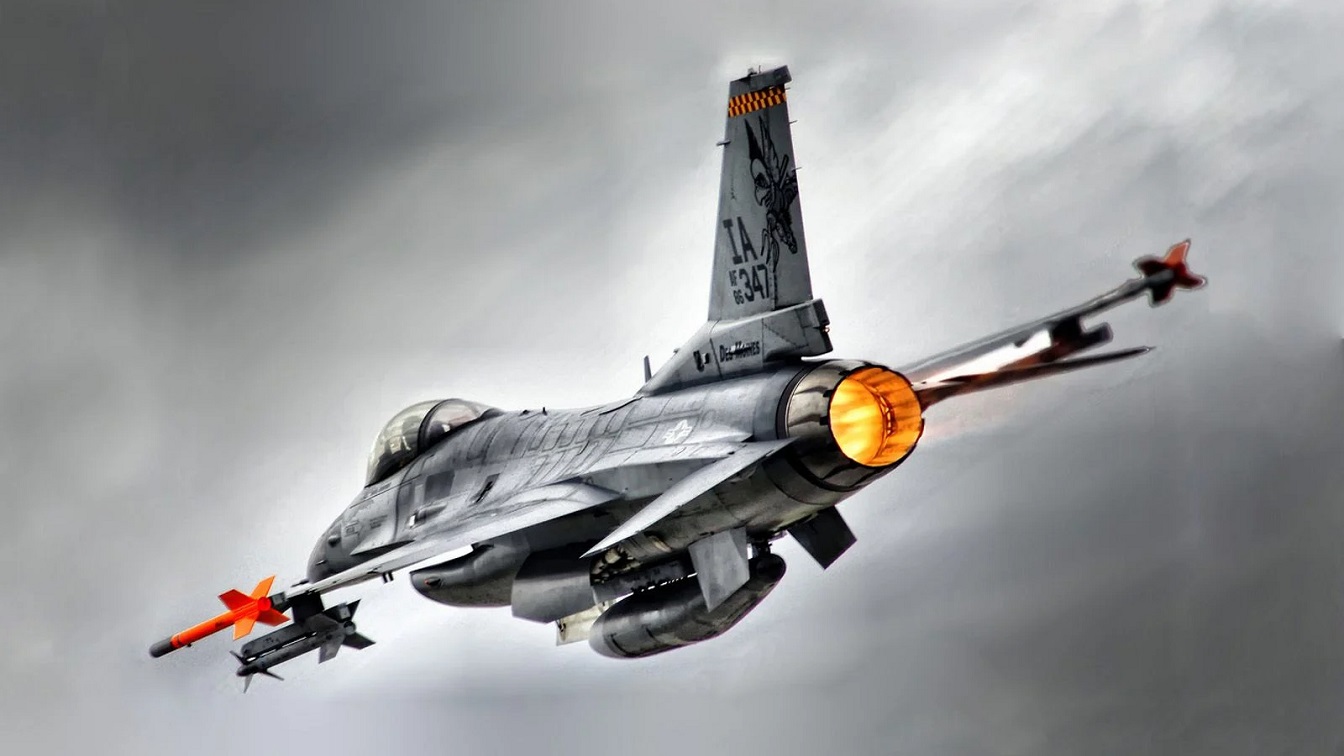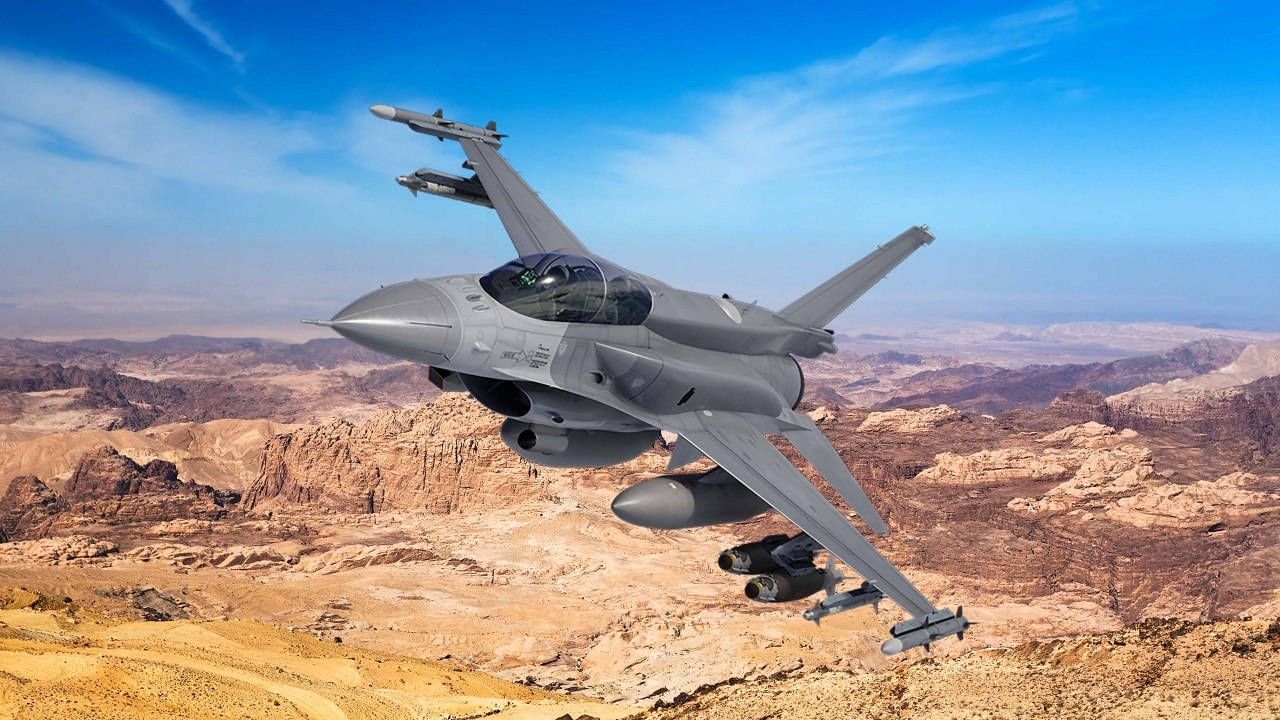Key Points and Summary: The F-16 Fighting Falcon, in service since 1978, remains a vital part of the US Air Force and is still in production.
-Despite its age, upgrades have kept the F-16 relevant, with the Block 70/72 variant boasting 5th-generation radar, advanced avionics, and a powerful mission computer.
-The F-16 has a proven combat record, from Desert Storm to recent conflicts, and its ability to carry a wide range of weapons makes it a versatile multirole fighter.
-While a replacement is in development, the upgraded F-16 will continue to serve for decades, particularly in roles not requiring stealth capabilities.
Beyond the F-35: The F-16’s Enduring Role in Modern Air Combat
The US is still using the F-16 Fighting Falcon in large numbers and producing it at the Lockheed-Martin plant in Greenville, SC. Over 30 countries use the aircraft, a testament to its excellence.
Although the F-16 is 51 years old, which is unbelievable, it is still a great aircraft. Recently, a Ukrainian pilot shot down a top-of-the-line Russian Su-34 over Kursk. With the upgraded Block 70/72 variants, the F-16 will continue to fly into the 2040s.
But critics point to the fact that there is only so much you can do with an aircraft design, and has the time come to retire the proud warbird?
Nearly Disastrous First Flight
The F-16 Fighting Falcon, known as the Viper to its pilots and crew, made its first and nearly last flight on January 20, 1974. Test pilot Phil Oestricher was only supposed to conduct a high-speed taxi test, during which the aircraft would travel on the ground under the power of its engine.
As Oestricher raised the aircraft’s nose slightly, the then-YF-16 started rolling—so sharply that its left wing and right tailplane hit the tarmac. As Oestricher desperately fought to maintain control of the aircraft, the situation became increasingly dire as the YF-16 began to veer to the left. He then veered sharply to the right in an overcorrection.
Realizing he would crash, Oestricher did what any good pilot would—he added power and took off. He flew the aircraft around the airbase for six minutes before returning safely to the ground.
Brief Overview Of the F-16
After that scary first flight, the Air Force adopted the F-16, and the airframe became operational in 1978. The Air Force procured more than 4,600 aircraft. The F-16 is an American-built single-engine supersonic multirole fighter aircraft originally developed by General Dynamics for the United States Air Force (USAF). Originally designed as an air superiority day fighter, it evolved into a successful all-weather multirole aircraft.
During the Vietnam War, the Air Force recognized the need for smaller, more maneuverable fighters to make high g turns without losing too much speed. The F-16 is the first production fighter aircraft to incorporate the fly-by-wire (FBW) flight control system (FLCS).
The flight control computer (FLCC) accepts pilot input from the stick and rudder controls and manipulates the control surfaces to produce the desired result without inducing control loss.

F-16 fighter. Image Credit: Creative Commons.
Innovative features include a frameless bubble canopy for better visibility, a side-mounted control stick (Joystick), and a reclined seat to reduce the effects of g-forces on the pilot. The left wing root houses an internal 20 mm M61 Vulcan cannon, and multiple locations are available for mounting various missiles, bombs, and pods. The aircraft has a thrust-to-weight ratio greater than one, providing power to climb and vertical acceleration.
A single Pratt & Whitney F100-PW-229 or a General Electric F110-GE-129 turbofan engine powers the newer F-16 Block 70/72 fighter jet. The F100-PW-229 develops a thrust of 29,100lb, whereas the F110-GE-129 generates a power of 29,500lb. The power plant provides the aircraft with a maximum speed of Mach 2 and a range of 1,740 nmi.
The F-16 performed admirably during Desert Storm, the Bosnia conflict, Afghanistan, Iraq, and now Ukraine. The US still operates nearly 950 F-16s in the Air Force.
Block 70/72 Variant Will Carry The F-16V Into the 2040s
The changes coming for the F-16 Viper integrate advanced capabilities as part of an upgrade package to better inter-operate with fifth-generation fighters, including the F-35 and the F-22.
The aircraft will retain the capability to suppress enemy air defense missions, air-to-ground and air-to-air combat, and deep interdiction and maritime interdiction missions.
The F-16V’s advanced glass cockpit incorporates an upgraded mission computer and state-of-the-art avionics, including color multi-function displays, a large, high-resolution center pedestal display, a helmet-mounted cueing system, and a high-volume, high-speed data bus.
The F-16 Viper is also equipped with an upgraded, programmable display generator, a Link-16 theatre data link, identification friend or foe, and HF/UHF/VHF radio communications. The single, high-performance, modular mission computer on the F-16V replaces the three original computers.

F-16 Block 70. Image Credit: Lockheed Martin.
The F-16V can be armed with a variety of air-to-air missiles (AAMs) and supports the integration of AGM-119/AGM-84/AGM-65G anti-ship missiles, and AGM-65 Maverick air-to-ground tactical missile, as well as Paveway laser-guided bombs, GBU-15 bombs and wind-corrected munitions dispenser weapons.
Air Force Technology also points out that the APG-83 AESA radar provides fifth-generation fighter radar capabilities. It can detect and track multiple aerial targets simultaneously. The F-16V Block 70’s Sniper Advanced Targeting Pod (ATP) is a key component of its advanced avionics suite. The ATP provides the F-16 with outstanding air-to-air and air-to-surface targeting capabilities.
Should The US Continue To Use The F-16 Upgrades?
In short, yes. The Air Force is working on a fighter to replace the F-16, which is still several years away. With a large fleet of viable F-16s, the Air Force can and will conduct operations that don’t require the stealth of a fifth-generation fighter.
Although the fighter is aging and will eventually need replacing, it can still provide excellent homeland defense, key reconnaissance, and ground attack missions. And as we’ve seen in Ukraine, the F-16 can still mix it up with the best of the Russian Air Force (VKS).
About the Author:
Steve Balestrieri is a 19FortyFive National Security Columnist. He served as a US Army Special Forces NCO and Warrant Officer. In addition to writing for 19FortyFive, he covers the NFL for PatsFans.com and is a member of the Pro Football Writers of America (PFWA). His work was regularly featured in other military publications.

